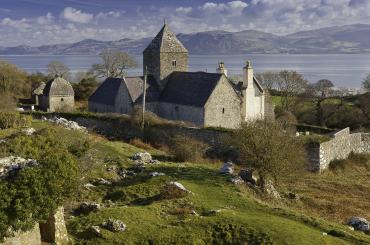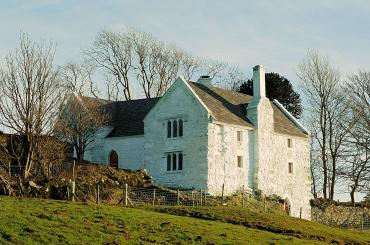Penmon Dovecote

A bird box on a truly epic scale
At first glance, it’s hard to believe that this massive structure was built to house pigeons and doves. Built around 1600 by influential Welsh politician Sir Richard Bulkeley, the dovecote’s huge domed roof provided room for up to 1,000 nests and was an important source of meat and eggs.
Inside the vaulted dome is a stone pillar some 12ft/37m high, which would have supported a revolving ladder used to reach the nests lining the walls.
Penmon is particularly well blessed with historic sites – make sure you also visit Penmon Priory, Cross and St Seiriol’s Well.
Opening times & prices
Opening times
| 1st April - 31st March | 10am-4pm |
|---|---|
|
Last admission 30 minutes before closing Closed 24, 25, 26 December and 1 January Can be viewed externally during reasonable daylight hours |
|
Visitor information
Pay and Display car park
Please note: the pay and display car park is managed by a third party and Cadw has no control over the operation of the tariffs or parking duration.
No smoking
Smoking is not permitted.
Drone policy
Please read our policy information about flying drones at Cadw monuments: read the guidance
Health & Safety
Care and attention must be paid when visiting this monument. It will be regularly exposed to the natural elements and may be slippery or muddy underfoot.
Appropriate footwear for the season and type of monument must be considered prior to your visit. Please only attend during the set opening hours, these have been chosen for your safety i.e. appropriate level of lighting.
Many of our monuments are located at areas of height, attention must also be paid therefore to the surrounding areas, ditches and moats when visiting.
Guardrails have been installed to prevent access to any areas of the site that we have deemed as dangerous or to prevent falls in specific areas. Please do not climb over or through any fixed installation.
Any handrail provided should be used to help you safely navigate historic steps, as these may be uneven and may be of different height.
As with all ancient monuments there is always a risk of stones being dislodged in bad weather, however, we manage this through extensive monitoring.
Climbing may result in serious injury.
There are several wild plants and flowers, although these are great pollinators, they may be poisonous to visitors and animals, we strongly advise you not to touch or allow dogs to eat any vegetation.
Please watch our health & safety film before visiting Cadw sites.
Iechyd a Diogelwch / Health and Safety
Please report any anti-social behaviour such as climbing, setting fires, graffiti etc. to CadwAccidentsReports@gov.wales
The following signs can be found around the site at key areas of risk, please pay attention where appropriate.
Slippery or uneven surfaces
Falling masonry
Directions
Google MapPostcode LL58 8RW
Unlimited access to Wales' past
Join Cadw for as little as £2.00 a month and gain unlimited access to over 100 historical sites.
Enjoy the many benefits of Cadw membership
- 10% off Cadw gift shops
- 50% off entry to English Heritage and Historic Scotland sites
- FREE entry to English Heritage and Historic Scotland on renewal
- FREE entry to Manx National Heritage properties
- FREE membership pack including car sticker and full colour map


